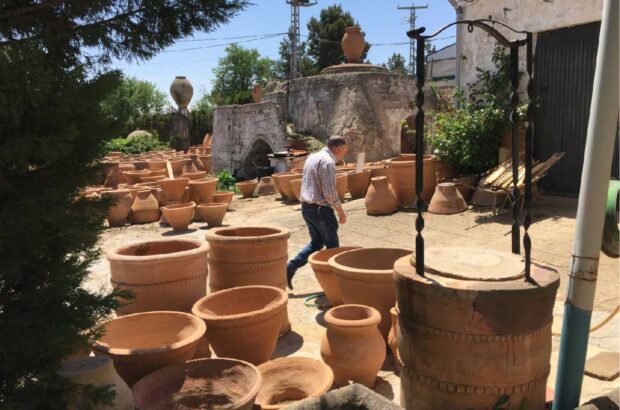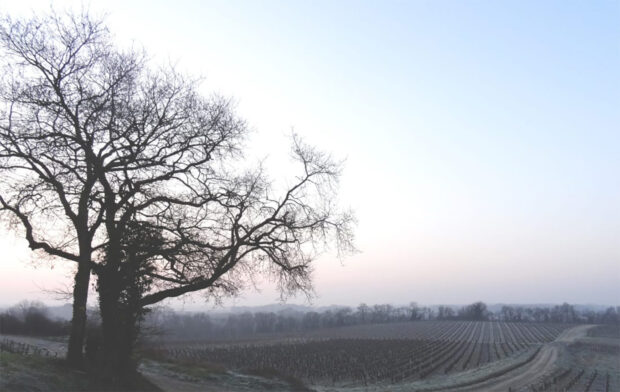Provence reds
Was it the wine that depressed Van Gogh as he drowned his sorrows in the pink painted villages of Provence in the 1880s? Probably not, but a glass or two of today’s Côtes de Provence red wines might have eased his gloom and, who knows, may have lifted him to even greater artistic heights.
Bernard Teillaud of Château Sainte Roseline agrees: ‘Provence reds have improved enormously and will soon become famous, for the conditions here are excellent, we have a unique terroir, good grapes, the latest technology and superb winemakers.’ If fame isn’t imminent, recognition certainly is: all the pieces are in place for Provence to woo the world and stand proudly with the classic regions of France. There are a few problems, however, and to make things worse, they are of the Provence winemakers’ own making. For years, their global reputation has been built on big volume rosé which projects an image of cheap, easy glugging wines glistening on the sun-filled terraces of the Côte d’Azur. Great for cash flow but hardly the image for a serious red wine region.
Things are changing though down in the Var, for although rosé is still king, it is now being challenged by the red prince. ‘Rosé was 60% of my production, now it’s less than 50,’ confirms Domaine de Rimauresq’s Pierre Duffort, ‘and I want my reds to be 60% within 10 years’, he concludes. He’s not alone, the Provence winemakers are fast realising that they’re at the start of something big and red. ‘I often surprise my guests with a “blind” carafe of my red Marie Estelle,’ quips Commanderie de Peyrassol owner and winemaker Françoise Rigord. ‘Many say the taste lies between Bordeaux and burgundy.’
A holiday destination…
We can all point instantly to Bordeaux and Burgundy on the map but I’ll bet many a finger slides up and down the Mediterranean coast looking for the vineyards of the Côtes de Provence. The clever finger stops between Marseilles and Nice. The expert points firmly between the port of Toulon and the exotic resort of Saint-Raphael. Saint-Tropez is just down the road. For those who like to link a sunshine holiday with a little wine tasting, you’re now in heaven. With over 300 sunny days every year, a rainfall chart that indicates a mean 600mm, conveniently concentrated in the spring and autumn, and the warm Mediterranean acting as a thermal regulator to keep the cold and frosts at bay, the region is paradise for the vigneron and holidaymaker alike. Even the infamous Mistral that batters the Rhône Valley doesn’t worry the winemakers too much as this cold, dry wind produces healthy grapes by reducing humidity and therefore, vineyard diseases.The region gained its appellation in 1977 and although there are five individual areas, the three largest zones of La Bordure Maritime (the coastal strip), Les Collines du Haut Pays (the hill range overlooking the sea) and La Valle Interiere (the flat valley that lies between the two), dominate the picturesque scene. The other two areas of Le Bassin du Beausset and La Saint Victoire lie to the west around the city of Marseilles but as Jean-Jacques Benetti, the Director of the exceptional Maison des Vins Côtes de Provence at Les Arcs admits: ‘On tasting it is difficult to distinguish between them.’
Making the wines
As you’d expect after browsing holiday brochures or reading Peter Mayle’s A Year in Provence, the vineyard vistas are stunning. The goblet bush and increasingly popular double branch cordon royale trained vines provide the rich greens that are set before the pink and violet tinted hills and quaint pastel villages. The soils vary from a limestone to a sandy clay, the vibrant red of the latter providing yet another splash to the colour extravaganza. The main red grapes are Grenache, Syrah, Cinsaut, Carignan, Mouvèdre and Cabernet Sauvignon and, although I often frown at the ‘all singing, all dancing’ Cabernet muscling in on the locals, in the Côtes de Provence, its minor inclusion does lift the indigenous varieties, especially when it partners Grenache and Syrah. Whilst welcoming the Cabernet inclusion, Jean-Jacques Benetti is adamant: ‘We are unique and not just another Merlot or Chardonnay spot.’ This thought is echoed by Château d’Astros’ winemaker Patrick Galliano: ‘Syrah is still the best grape for our red and we’ve replanted two hectares (ha) since 1998.’
The Grenache, Syrah, Cabernet combination is controlled in the vineyard to a maximum yield of 40 hectolitres per hectare to produce deep coloured, intense bramble and berried fruit wines that are beautifully balanced with a surprisingly crisp acidity. ‘It’s our altitude at between 250 and 300 metres and our stoney soils that give us the acidity, even in the warmest years,’ explains Françoise Rigord. Whilst many keep the three grapes on an equal percentage footing, winemaker Marc Petrequin at Château de Berne goes international for his Cuvée Special. ‘I use a 50:50 Cabernet-Syrah blend because I want a different taste to everybody else,’ he explains.
At the impressive Château Miraval, winemaker Emmanuel Gaujel favours a more traditional mix with equal amounts of Syrah and Grenache being balanced by 20% of Cabernet. ‘I’ve experimented, but this cépage gives me an excellent balance that also responds well to our 12–15 month French oak barrique maturation,’ he notes. The body of the Grenache, the bramble fruit and ripe tannins of the Syrah, and the touch of Cabernet’s blackcurrant sweetness, linked to a zippy acidity and the toasty vanilla sheen of Allier oak, produced an exquisite 1998 at Miraval. No wonder it won Gold in Paris last February.
Oak barrels are now a common sight in the Provence cellars but the traditional large old oak vats continue to play their part. ‘We mature and round off our reds in old 50 hectolitre oak vats for 12 months,’ confirms Rimauresq’s Pierre Duffort. Rimauresq is one of the 18 cru classé domaines in the region and as Roseline’s Teillaud interestingly points out: ‘We’re also proud to be a cru classé. You don’t think that Bordeaux and Provence are the only French regions that have such a classification?’
Oak is a hot subject and, to their credit, many winemakers continue to experiment. ‘We’ve even tried American oak barriques but it just doesn’t work,’ says Miraval owner Tom Bove wryly, ‘which is a pity for with a new French 225-litre barrel now costing £400, American barrels would be cheaper.’ As you travel around the region the same ‘quality first’ message emerges – taken to its extreme, Château de Berne’s winery and cellar have definite Hollywood overtones.
The region’s cooperatives are also being swept along in the ‘quality first’ campaign and Les Vignerons des Caves de Provence, which is a union of 14 coops, harnesses the technical talents of its 5,000 producers. Their Grenache (60%), Cabernet Sauvignon (10%), Mouvèdre (20%) and Syrah (10%) blend for their deep coloured, soft, yet crisp, black berry fruit L’Estandon Royal shows that Provence can also offer value for money. On reflection, the top reds of the region may be slightly heavy on price compared to their classic competition but one taste could change all that. It’s time to put past prejudices behind us.As the Côtes de Provence reds fight to throw off the cheap and cheerful rosé image, they have another, not-so-obvious fence to jump. Can a red wine region be taken seriously without a vintage portfolio? I think not, and in the Côtes it’s difficult to find a wine that’s more than two years old. With rosé sales falling, and cash flow following, you can understand that the winemakers want to sell their reds ‘asap’ to keep the bank happy, but serious wine needs vintage variation to give perspective to the wine drinker. Let’s be honest, half the fun in Burgundy and Bordeaux is comparing vintages and moaning because our favourite winemaker didn’t handle ‘that lousy year’ so well. The frustrating part is that the terroir and grapes of the Provence region are tailor-made for vins de garde, as a vertical tasting of 1998, 1993, 1988, 1990 and 1982 at Commanderie de Peyrassol proved. The elegant 1988 and brilliantly ripe, yet balanced 1990 stole the show, and Rimauresq’s 1983 which had an amazing chocolate, prune and liquorice complexity, shows the pleasures that await us all – given the chance.
All the pieces are in place but unfortunately the world looks on through rosé coloured glasses – and this time that’s not favourable! The rosé image has to be dismantled and the reds presented from their own stage. Of course, it won’t be so easy, but once the marketeers get it right, the wines will speak for themselves. Hopefully Van Gogh is sipping a glass of heavenly Côtes de Provence rouge as we speak.












